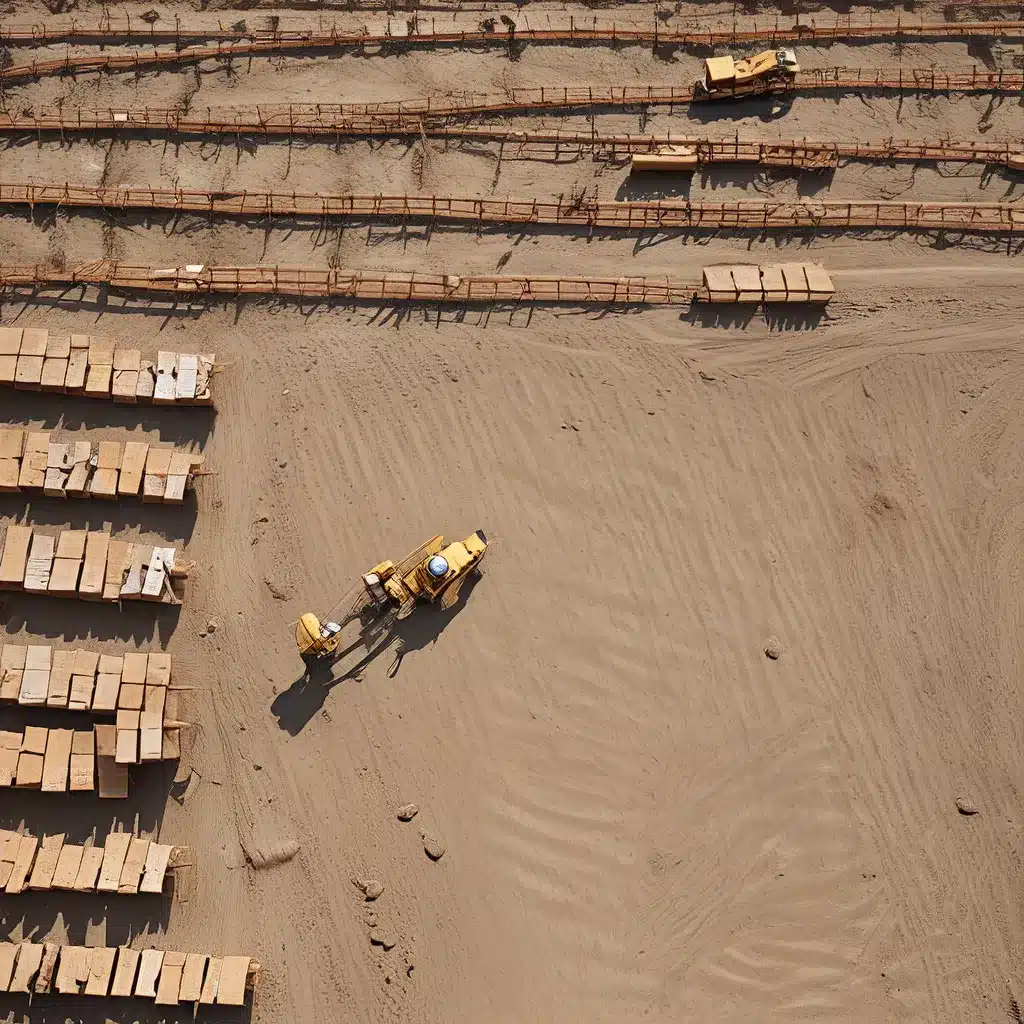
The Perilous Path of Parts and Pieces
Construction projects are a bit like an intricate dance – each step must be perfectly choreographed and timed, lest the whole performance descend into chaos. And when it comes to the supply chain, let me tell you, it’s like herding cats… on roller skates… during a thunderstorm. Okay, maybe that’s a bit dramatic, but the point is, keeping all the moving parts of a construction project synced up and on schedule is no easy feat, especially these days.
You see, we’re living in a world where supply chain disruptions have become as common as a contractor’s coffee break. It’s like a never-ending game of Tetris, trying to fit all the necessary materials, equipment, and resources into the right place at the right time. And let me tell you, those supply chain gremlins are relentless! They’re always finding new ways to throw a wrench in the works, whether it’s port congestion, labor shortages, or just good old-fashioned weather-related delays.
But as a general contractor, I’ve learned that the key to overcoming these challenges is to embrace the power of technology and innovation. By harnessing the latest tools and techniques, we can not only navigate the treacherous terrain of the supply chain, but we can also come out on top, delivering projects on time, on budget, and with a smile (well, mostly a smile).
Constructing a Digital Fortress
One of the most powerful weapons in our arsenal when it comes to conquering supply chain disruptions is the mighty digital model. These 3D and 4D wonders are like a crystal ball for construction projects, allowing us to see into the future and anticipate potential pitfalls before they even happen.
Imagine this: you’re in the middle of a big project, and suddenly, you get word that a crucial material is going to be delayed by weeks. With a traditional non-digital approach, you’d be left scrambling, trying to figure out how to rearrange the entire schedule and keep the project on track. But with a digital model at your fingertips, you can quickly assess the impact of the delay, communicate corrective actions to your team, and get things back on course before the butterfly effect takes hold.
And it’s not just during the execution phase that these digital models shine. No, they’re also invaluable during the bidding stage, where we can use them to detect potential issues, generate accurate estimates, and produce bids that are both competitive and profitable. It’s like having a personal construction concierge, always one step ahead of the game.
Coordinating the Construction Chorus
But digital models are just the tip of the iceberg when it comes to overcoming supply chain disruptions. We also need to harness the power of technology to streamline communication and collaboration among all the key players in the construction supply chain.
Think about it – a typical construction project involves a veritable symphony of stakeholders, from architects and engineers to contractors and subcontractors. And trying to keep them all in tune can be a real headache. But with the right construction-specific project management software, we can create a centralized hub where everyone can access the latest information, share documents, and coordinate their activities.
It’s like having a virtual conductor leading the orchestra, making sure that everyone is playing their part in perfect harmony. And with the help of mobile apps, we can even extend this coordination out to the field, where our site workers can submit real-time updates, report progress, and stay connected with the rest of the team.
Embracing the Unexpected
Of course, even with all the technological wizardry at our disposal, the reality is that supply chain disruptions are always going to be a fact of life in the construction industry. But that doesn’t mean we have to let them derail our projects.
Instead, we need to embrace the unexpected and be willing to think outside the box. Sometimes, that might mean exploring alternative materials or delivery methods, even if they’re not our tried-and-true go-to’s. It’s like that old saying, “Necessity is the mother of invention” – and in the face of supply chain challenges, necessity becomes the driving force behind innovation.
Take the example of Georgia Tech’s Kendeda Building, which earned the coveted Living Building Challenge certification. When faced with supply chain constraints, the project team didn’t throw up their hands in despair; instead, they got creative, incorporating wood from sustainable forests, salvaged materials, and other innovative sourcing strategies to reduce the building’s environmental impact.
Collaboration is the Key to Conquering
And that’s really the secret sauce when it comes to overcoming supply chain disruptions in the construction industry: collaboration. It’s not enough to just have the latest technology or the most innovative ideas – we need to bring everyone to the table, from designers and builders to suppliers and subcontractors, and work together to find solutions.
Because let’s face it, no one person or company has all the answers. But when we pool our collective knowledge, experience, and resources, that’s when the magic happens. It’s like that old saying, “Many hands make light work” – and in the case of construction supply chains, many minds make for better problem-solving.
So, the next time a supply chain gremlin tries to throw a wrench in your project, don’t panic. Instead, take a deep breath, embrace your inner MacGyver, and get ready to work with your team to find a solution. After all, Reading General Contractor is all about overcoming challenges and delivering exceptional results, no matter what obstacles stand in our way.
Related posts:
No related posts.




